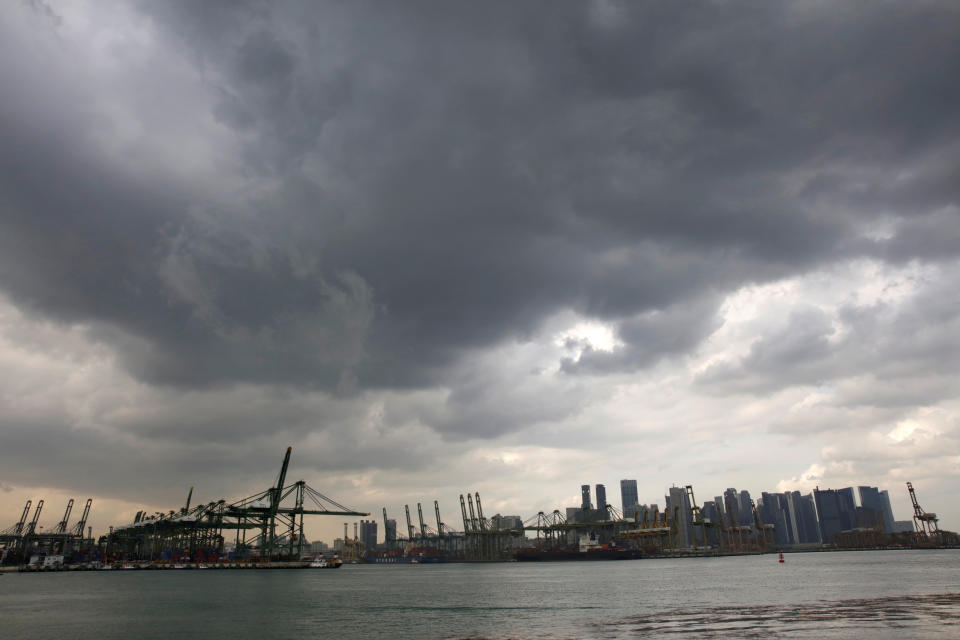COMMENT: Singapore, Save Your Water Baby From Mahathir

By Andy Mukherjee
A homegrown Singaporean company that owns one of the financial center’s three seawater desalination plants is struggling to stay afloat. Whether Hyflux Ltd. sinks or swims will matter to creditors and shareholders. The strategic stakes, though, are far higher.
Now that Singapore’s old foe Mahathir Mohamad is back as Malaysia’s prime minister, and once again threatening to renegotiate a 1962 agreement to supply raw water to the city-state, making sure the Hyflux plant is owned until 2038 by a friendly buyer could become an issue of national security. (After 2038, the facility will be owned by the Public Utilities Board, or PUB.)
In return for refraining from enforcement proceedings, Malaysian state-owned lender Malayan Banking Bhd. has got Hyflux to agree to sell its interest in subsidiary Tuaspring Pte’s integrated water and power project by mid-October. By Dec. 11, Maybank, the sole secured creditor to the project, wants the deal approved by the PUB and the Singapore High Court, if required.
The timelines are tight, considering Hyflux has been looking for a buyer for Tuaspring for more than a year. The problem is the 411-megawatt power-generation unit attached to the desalination plant. Rampant overcapacity in Singapore’s electricity industry will make it tough to line up suitors.
So how does Singapore ensure the plant stays in safe hands? A template may exist in the resolution of SMRT Corp., whose minority shareholders were bought out in 2016 by state investment firm Temasek Holdings Pte, effectively nationalizing the island’s stoppage-prone main subway operator (after making it offload trains and signaling systems to the transport regulator).
If SMRT’s problem was systematic underinvestment, Hyflux’s weakness is an overstretched balance sheet. By helping it shed some of its debt load, Singapore can consolidate the existing fragmented ownership of critical water assets. SingSpring, which was Singapore’s first desalination plant, is 70 percent owned by publicly traded Keppel Infrastructure Trust. Hyflux controls the remaining 30 percent. The PUB owns Singapore’s third and latest desalination plant.
Hyflux may not have a direct link to the government. But its business of water is as much the state’s headache as the subway network.
One way to help Hyflux restructure could be to house, say, a 70-percent-equity share in Singapore’s water assets — SingSpring, Tuaspring and the new PUB plant — in Keppel Infrastructure Trust. The significant direct and indirect exposure of Temasek to the trust would protect Singapore’s strategic interests. A joint 70:30 bid by Keppel Infrastructure Trust and PUB for Tuaspring would see off Maybank and make the state’s control foolproof. Additionally, PUB could buy Hyflux’s residual 30 percent share of SingSpring, hydrating the thirsty water firm with some more liquidity.
That would be a better outcome than liquidation of a rare successful entrepreneurial venture in an economy dominated by multinationals and state-backed enterprises. As an asset-light operator in Singapore, Hyflux founder Olivia Lum can focus on the Middle East, where the group has projects in Algeria, Saudi Arabia, Egypt and Oman.
Singapore needs Hyflux’s expertise, not its balance sheet. The island’s water requirements are projected to double from the current 430 million gallons per day by 2060 — a year before the 1962 agreement with Malaysia expires. The existing desalination capacity can meet only 130 million gallons of demand. Even with the big push by the government to recycle wastewater, more plants to treat seawater would be needed.
Mahathir’s threat may be an empty one, but Singapore won’t want to be under its neighbor’s thumb. A lifeline for Hyflux could go some way in the resource-poor city’s bid to secure its destiny.
To contact the author of this story: Andy Mukherjee at amukherjee@bloomberg.net
© 2018 Bloomberg L.P

